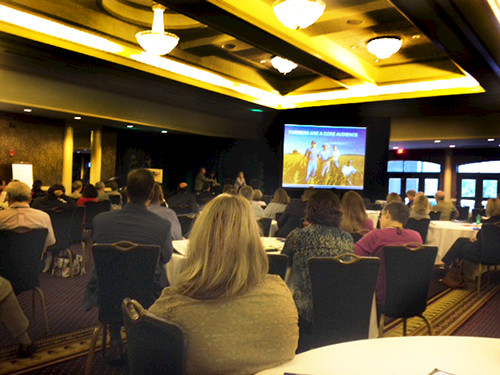Mississippi report card video
Bill Dennison ·As part of the release of the draft Mississippi River report card, we partnered with America's Watershed Initiative and Conversant to produce a short video that described both the process of producing the report card and the report card scores. This video did a great job of linking the riverboat paddle wheel with the report card graphic based on the paddle wheel. It used black and white still photos along with color video to highlight the historical connection that our society has had with the Mississippi River and the new and emerging interactions. The video also featured some of the personal interviews we conducted with the various experts that were consulted in our basin workshops. The six goals were also highlighted in the video, with our icons, still photos and video clips used to illustrate each goal (ecosystems, flood control, transportation, water supply, economy and recreation). And most importantly, the video used a series of images that highlighted the draft report card findings. I really liked the way the positive report card grades were highlighted, followed by the highlighting of the poorest grades. This manner of animating the report card provided an added dimension to interpreting the grades.

I am always amazed at how efficiently a short video can convey information. This is accomplished by choosing the right images and sequence, carefully editing the narration, and having a strong storyline. The process used to develop this powerful video is 'storyboarding'. Conversant convened a series of conference calls to develop the storyboard and IAN's Jane Thomas provided many of the graphics. Each 15 second time step was carefully planned and the resulting five and a half-minute video is packed with information and is beautifully crafted. It was impressive that some of the materials for the video were fairly last-minute due to changes in the report card format and scoring, yet the final product came out well.
In the future, it would be nice to accompany all of our various report card releases with a short informative video like the one produced for the Mississippi River report card. The videos can be posted on the websites of organizations or agencies responsible for the report card, but the videos can also be posted on various video websites (e.g., YouTube, Vimeo) for broader dissemination. The production of the video does require a considerable amount of effort, and a poorly produced video will not enhance the report card, but could distract from the report card. This means that the adequate time and resources are needed to produce these videos, but this example provides an impetus to begin obtaining the time and equipment costs.
About the author
Bill Dennison

Dr. Bill Dennison is a Professor of Marine Science and Vice President for Science Application at the University of Maryland Center for Environmental Science.